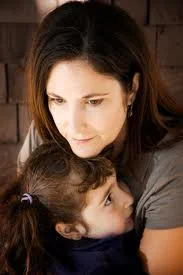Regroup. Reframe. Relax. This is my motto. My theme if you will. I use it in my writing, my personal perspective, my work and my every day life. And yet, it’s a challenge. And right now, I am feeling very, very challenged.
I’m not sure if this is the appropriate place to vent, but seeing as I write about perspective and getting comfortable with our world, maybe it’s the perfect place to vent.
You see, I’m moving. And if you have ever moved, you will recall the highs and lows that come with moving and making just about any transition in your life. I’m not opposed to transition and change, I know it’s inevitable and it helps us grow, but to combat any discomfort, I like to plan everything out and am a chronic goal setter because it makes me feel less chaotic during change. As long as I feel some semblance of personal control during transition, I’m good.
When my husband suggested we move (for the past three years, but I was in denial until this past Spring) I was very hesitant, and assumed/hoped we’d never find what we liked and would have to stay in our current home and expand. I felt very strongly about this until I started visualizing myself in each new house and slowly started to see our family growing in these places. And when we found the house we really wanted, that had everything we were looking for, we knew we had arrived, it was meant to be.
And so began our summer of transition. My normal goal of shutting down and relaxing with my children at the lake each day and berry picking and pool hopping had to shift to the new goal of getting fully prepared to move at the end of the summer and unfortunately during the first week of school. But it’s a great house and I’m a great planner, so it would be a sacrifice well worth it.
Every transition has its low points and drama and the buying and selling of our houses has had its fair share in the past two months, but they’ve been manageable…until two weeks ago. Long story short, we are scheduled to close on our current home this week, our boxes are packed, we’re on our way out, but at this very moment, we have no definitive plan on where we will move to.
Due to a major error on the seller of the house we are buying, we are no longer closing on the house this week. We may be in the future, but there is no guarantee and there are significant risks in the process of waiting it out. We were offered the option of renting the house while we wait, but we still have not seen a rental agreement and we must be out of our home in four days. We have no concrete back up plan- which is unheard of for me- but I am holding out. Why? I am relying on Faith. I am practicing what I believe in and what I struggle with.
This morning I made various lists for myself of what I need to get done today. Remaining closets that need packing, meal plan for the week, clothes laid out for school and a final exit plan for the house- the house I didn’t want to leave. I am taking control of what I can. And the rest, a very large rest, I am leaving to Faith. It is not easy. I am battling the What If’s, the uneasiness of not having an action plan, and the sadness of leaving the security and comfort of my home. But I choose to believe that it will be okay. I have to. I have to believe that it will work out for my family. I have to regroup various times throughout the day, I have to re-frame my thoughts almost continuously and I have to relax, at least once a day, if even with help of a nice glass of Pinot Noir. It is imperative.
I will have a back up emergency plan in a few days if I have to. But for now, I’m riding it out. Somehow, when it all works out, I think it will make the reliance on Faith that much more rewarding. And if it doesn’t……we’ll cross that bridge.
This particular life challenge has been a struggle, but not one I’m afraid to tackle. It’s not any harder than the others and the lessons we’re learning will be invaluable somewhere down the road. So if you don’t hear from me in a month, its not that I’ve given up. It’s that I’ve been locked up, behind some padded walls by some very skeptical people who are uncomfortable with my incurable optimism…or in the storage facility I am living in that doesn’t have Wi-Fi. Either way, it only gets better from here, right?









